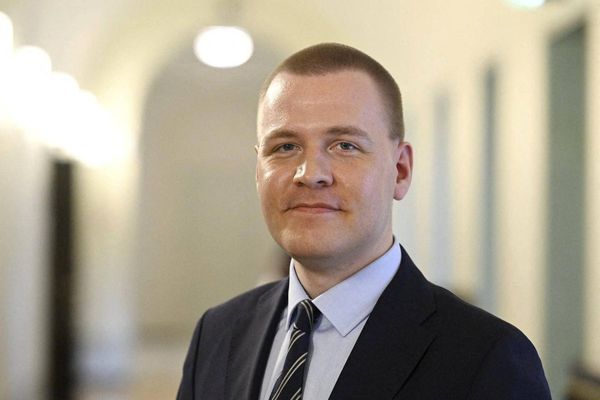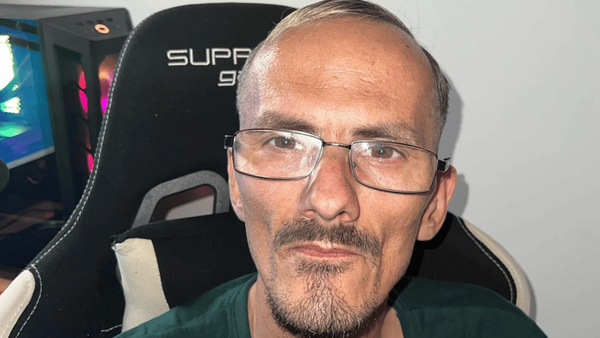Late French designer Yves Saint Laurent once said fabrics are "the basis of everything. The fabrics determine the idea, the line." And no one knew the importance of fabric better than Giuliana Cavaglieri Tesoro.
Tesoro (1921-2002) used her training as an organic chemist to turn into a high-tech fabric pioneer. She fixed what was missing in the chemical composition of textiles. And she made fabrics more comfortable, practical, wearable and safe.
Her advances in textile processing and organic compounds improved clothing for consumers. But they also improved efficiency for manufacturing. She developed flame-resistant fibers and found a way to prevent static in synthetic fibers. And she boosted permanent-press properties. She earned more than 125 U.S. patents for surface active agents, chemical modification of fibers and fire retardants.
How did Tesoro achieve success as a high-tech fabric leader? To meet her goals, she broke barriers and worked arduously.
Don't Accept Defeat
Tesoro's drive to succeed as a chemist helped her overcome hardships. And she faced many. She grew up Jewish in Venice, Italy, during the Benito Mussolini era. She finished high school in 1938. But she was denied access to Italy's university system due to fascist rules.
She was determined to pursue an education anyway. Tesoro fled Italy. She moved to Switzerland first. And then in 1939 she went to the U.S. In the U.S., she entered Yale University's graduate program. In 1943, at age 21, she received her Ph.D. in organic chemistry. The same year she married Victor Tesoro. The couple had two children.
Textiles enthralled her. Tesoro knew her knowledge of chemistry could reinvent materials. Thus, a lifelong career in breaking new ground in textiles was launched. In 1944, she took a job as a research chemist at Onyx Oil & Chemical. Later, top textile firm J.P. Stevens & Co. hired her and put her in charge of some 50 people. She built a pile of knowledge she'd use later.
And it didn't take much longer. She accepted a post as a senior chemist at giant textile company Burlington Industries in 1969. Two years later, she took over as Burlington's director of chemical research. Companies offered the most open fields for her to push the boundaries in materials. They had the will and cash to bankroll research. But she looked to share her knowledge, too. Tesoro entered academia. She became a visiting professor and adjunct professor in the MIT Department of Mechanical Engineering from 1972 to 1982.
Keep Innovating Like Giuliana Tesoro
Many of Tesoro's breakthroughs, though, came next at what was then the Polytechnic University (now the NYU Tandon School of Engineering). There she was a research professor in polymer chemistry from 1982 through her retirement from there in 1996. She did much of her greatest work in that time.
Kalle Levon, a research professor at Tandon, worked with Tesoro at the Polytechnic University in the early 1990s. At this time, he was an assistant professor. And Tesoro was a research professor. Levon and Tesoro jointly published two papers based on the results from projects they worked on. Tesoro was a "strong and determined woman," Levon said.
"Professor Tesoro's work was very important, not only the molecular thermosets in electronics, but also flame-retardant fibers and natural polymers in textiles," Levon told Investor's Business Daily.
Tesoro: Keep Curious
Tesoro's curiosity only heated up when she hit roadblocks. "She had a fascination with organic chemistry and making molecules," said Levon. "All her knowledge and experience provided her with the curiosity of the future of synthetic macromolecules."
Levon says in those times it was always difficult to get grants. Professors competed with industrial partners. Companies often held the cards. But Tesoro overcame the competitive challenges. She brought deep knowledge, experience, a wealth of published works and patents to the table. And she was well liked, too. Co-workers took inspiration from her unique experience in organic chemistry, Levon says.
Tesoro's accomplishments and leadership won praise from industry peers, too, Society of Women Engineers Archivist Troy Eller English told IBD. She received the highest honors awarded by the textile profession, including the 1978 Society of Women Engineers (SWE) Achievement Award.
Tesoro's leadership reached far. She established "a distinguished international reputation for her contributions to the science and technology of polymers, fibers and fabrics," said the awards nomination packet. The head of the mechanical engineering department at MIT, Herbert Richardson, submitted the packet.
Edward Weil, a retired research professor at Tandon, worked with Tesoro. They ran company-sponsored research projects in textile flame retardancy at the Polymer Research Institute. Weil describes Tesoro as a "very diligent research person."
"She didn't like to give up if she had negative results," Weil told Investor's Business Daily. "She was a very determined, persistent type of person. And she had a good combination of understanding of the scientific aspects and practical applied aspects (of the research)."
Encourage Diversity Like Giuliana Tesoro
As a professor, Tesoro served as an inspiration to her female students, too. And inspiration was sorely needed.
Tesoro started in academia in the 1970s. There was only a "handful" of female faculty members in engineering across the U.S. at the time, says Amy Bix, a professor of history at Iowa State University and director of the Consortium for Historical Studies of Technology and Science. Bix also wrote "Girls Coming to Tech: A History of American Engineering Education for Women."
Tesoro's accomplishments and teachings pushed other women she worked with to see what's possible. "Female undergraduate and graduate students in engineering had been defined as being in such a masculine field," Bix told IBD. "And being able to work with a female professor made a difference to a lot of females in that generation."
It wasn't easy for women to break through the barriers they faced achieving success in engineering and academia during Tesoro's time. But Tesoro was determined to pursue her career in organic chemistry and made sure to tap into the opportunities presented to her.
It wasn't easy. Women still faced serious discrimination and sexual harassment at the time. But she found her way in. "There was a window of opportunity for women, and she (Tesoro) was able to take advantage of some of that," Bix said.
Find Your Opening
How did Tesoro find her way in a male-ruled world? She looked for and found her edge. Tesoro took advantage of the fact that she started in chemistry rather than engineering. Chemistry was more open to women than engineering was, says Bix.
It also helped that Tesoro specialized in textile chemistry. A lot of times "subfields" are open to women, says Bix. Textile chemistry was one of them, perhaps because it was a relatively new field in the early 1900s.
"It was easier to be in a field just opening that didn't have an old boys network," said Bix. "That might have helped her. In the 1970s there were a few administrators at MIT who were women in key places. The time and the place make a big difference."
Giuliana Tesoro's Keys
- Renowned fabric innovator. She developed flame-resistant fibers and improved permanent-press properties for a variety of textiles.
- Overcame: Hardships and limitations she faced growing up Jewish in Venice, Italy, during the Benito Mussolini era.
- Lesson: "Be willing to continue in the field despite seeing and experiencing the obstacles firsthand."







